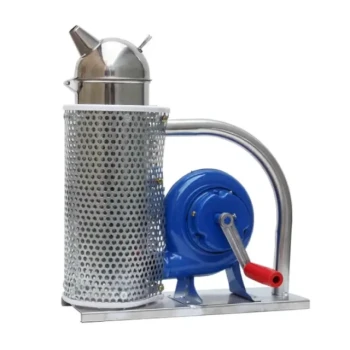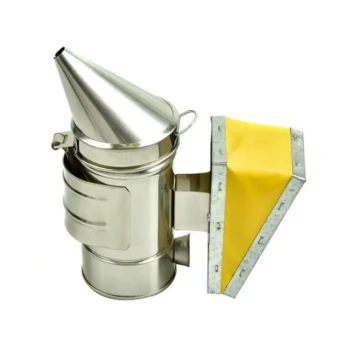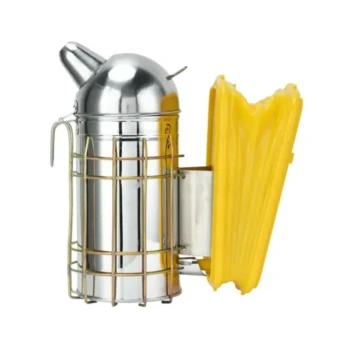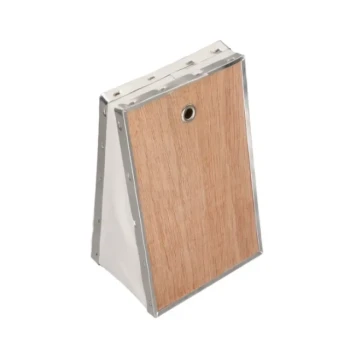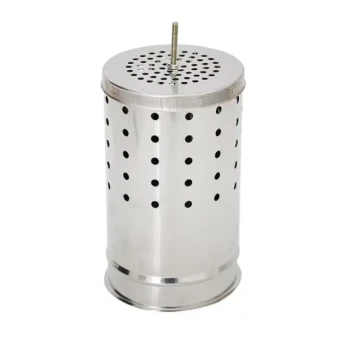In short, smoke calms bees by triggering their primal survival instincts and simultaneously masking the chemical alarm signals they use to coordinate a defensive attack. This combination redirects their attention away from the beekeeper and towards self-preservation, creating a crucial window for a safe and effective hive inspection.
Smoke does not sedate or tranquilize bees. Instead, it leverages their evolutionary response to fire, causing them to focus on consuming honey in preparation to flee while also jamming their primary communication channel for mounting an attack.
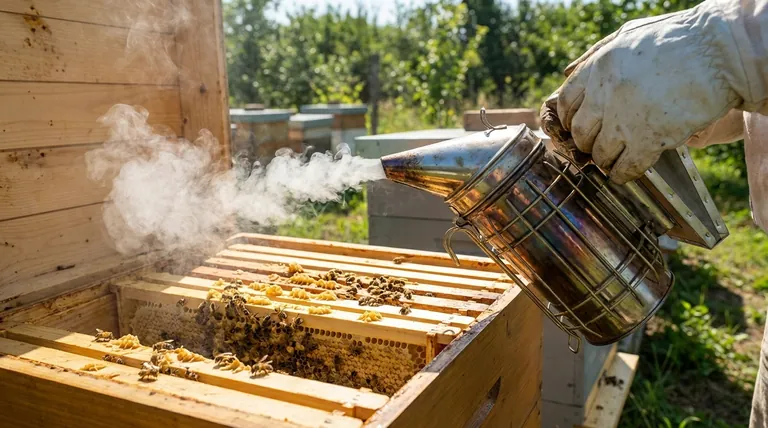
The Two Primary Mechanisms of Smoke
To use a smoker effectively, you must understand the two distinct effects it has on a honey bee colony. These are not about "calming" the bees in a sedative sense, but about redirecting their collective behavior.
Triggering the "Impending Fire" Instinct
Bees have an deeply ingrained, evolutionary response to the threat of fire. The presence of smoke signals that their home may be destroyed.
Their priority instantly shifts from colony defense to individual survival and the preservation of resources. The bees' primary response is to gorge themselves on honey, preparing to abandon the hive and take as much energy with them as possible to start a new one.
A bee with a full abdomen of honey is physically less able to curl its body to sting. More importantly, its focus is entirely preoccupied with this survival task, not with investigating an intruder.
Masking Critical Alarm Pheromones
When a bee is injured, crushed, or feels threatened, it releases alarm pheromones. This chemical signal is an urgent call to arms, instantly alerting nearby guard bees and inciting a coordinated defensive attack.
The strong aroma of smoke effectively overwhelms and masks these alarm pheromones. It acts as a form of communication jamming, preventing the "attack" signal from spreading throughout the hive. This stops a small incident from escalating into a full-blown defensive response from the entire colony.
Understanding the Trade-offs and Best Practices
While smoke is an essential tool, its misuse can be counterproductive and even harmful. Understanding the correct application is as important as understanding why it works.
Over-smoking: A Common Mistake
More is not better. Excessive smoke does not make bees calmer; it creates panic.
Too much smoke can be overly irritating to the bees' respiratory systems, driving them off the comb and making inspection nearly impossible. It can also impart an undesirable smoky flavor into the honey and wax.
The Goal is Redirection, Not Sedation
Always remember that you are managing behavior, not administering an anesthetic. The bees are not "sleepy" or "drugged." They are alert and actively engaged in a different task.
This mental shift is temporary. As the smoke dissipates, the alarm pheromones will become detectable again and the bees' defensive instincts will return.
Applying Smoke Correctly
Effective smoking is a gentle, deliberate process. Start with two or three cool, white puffs of smoke at the hive entrance. Wait for 30-60 seconds before opening the hive.
This initial application gives the bees time to perceive the "threat," begin eating honey, and allows the smoke to start masking any initial pheromones. Once the hive is open, apply one or two gentle puffs across the top of the frames before proceeding with your inspection.
Applying Smoke for a Successful Inspection
Your goal dictates how you should apply smoke. Use it as a precise tool, not a blunt instrument.
- If your primary focus is a quick, routine check: A few light puffs at the entrance and under the lid are likely all you need to mask initial alarm signals and keep the colony manageable.
- If you are performing a longer, more invasive procedure (like a split or requeening): You may need to apply a few gentle puffs periodically over the top bars to maintain the communication-masking effect as you work.
- If the bees become highly agitated during an inspection: Use a few deliberate puffs directly over the area of activity to disrupt their defensive communication and re-establish a cooperative environment.
Used with understanding, smoke is the key that transforms a potentially confrontational inspection into a cooperative process.
Summary Table:
| Mechanism | How It Works | Key Effect |
|---|---|---|
| Fire Instinct | Triggers a primal response to gorge on honey. | Redirects focus to survival, not defense. |
| Pheromone Masking | Overwhelms chemical alarm signals. | Prevents coordinated defensive attacks. |
Master your hive inspections with the right equipment from HONESTBEE.
Understanding bee behavior is the first step; having reliable, professional-grade tools is the next. Whether you're a commercial apiary managing thousands of hives or a distributor supplying the market, HONESTBEE provides the durable, high-performance beekeeping supplies and equipment you need for efficient and safe operations.
Ready to equip your business for success? Contact our wholesale experts today to discuss your specific needs and discover how we can support your growth.
Visual Guide
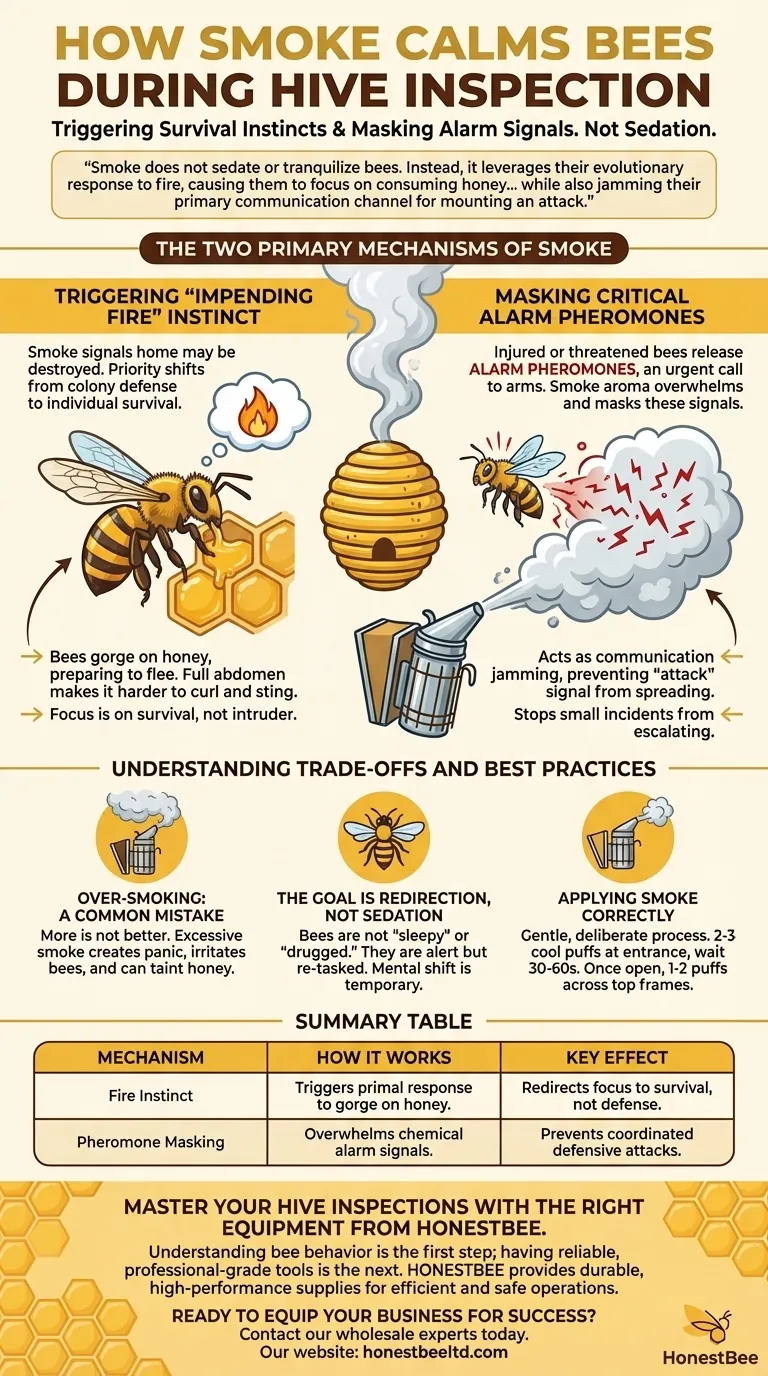
Related Products
- European Stainless Steel Bee Smoker for Honey Bee Hive
- Stainless Steel Honey Bee Smoker Hive and Honeycomb Smoker for Beekeeping
- Economy Galvanized Beekeeping Honey Bee Smoker for Wholesale
- Premium Traditional Copper Bee Smoker with Bellows
- Electric Bee Smoker European Style Bee Hive Smoker for Beekeeping
People Also Ask
- What are the key benefits of using a bee smoker? Master Hive Inspections Safely and Efficiently
- What are the differences between stainless steel and galvanized steel bee smokers? Choose the Right Smoker for Your Apiary
- What are the benefits of cleaning a bee smoker? Ensure Hive Safety and Bee Health
- How does a smoker help during hive inspections? The Key to Calm, Safe Beekeeping
- Can you use too much smoke on bees? The Right Way to Use a Bee Smoker for Calm Inspections







